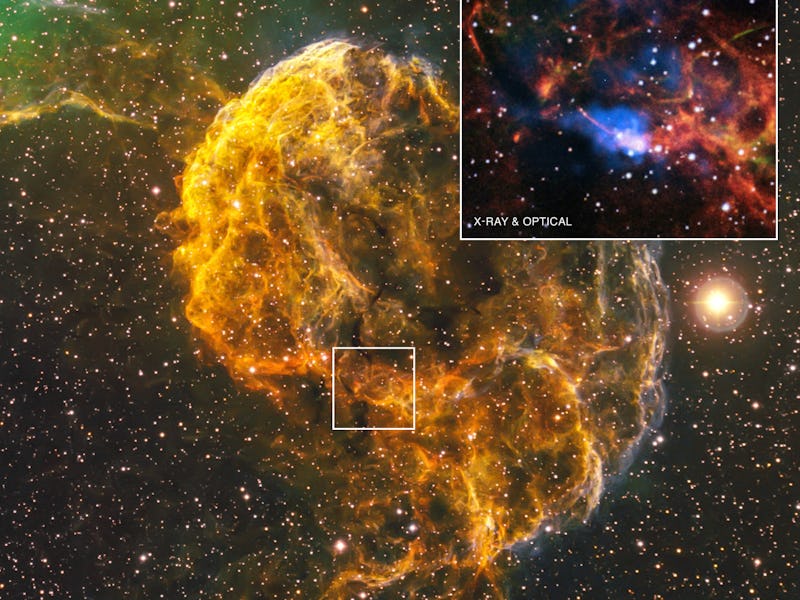This "Jellyfish Nebula" is a Remnant of a Stellar Explosion

Supernovas are both harbingers of death and creators of magnificent cosmic formations. These violent stellar explosions decimate the stars from which they come form, but they leave behind multi-colored billows of intergalactic gas that’s nothing less than eye candy for astronomers and space enthusiasts alike.
The “Jellyfish Nebula” — technically called IC 443 — is the remnant of a massive space explosion that occurred anywhere from 3,000 to 30,000 years ago. This gigantic plume of dust was featured as NASA’s Astronomy Picture of the Day on Friday and is the perfect example of how something utterly destructive can breathe new life into the universe.
Join our private Dope Space Pics group on Facebook for more strange wonder.
The image seen below is all that remains of a massive star that ran its course 5,000 light-years away. Once a star runs out of the thermonuclear fuel that keeps it burning, it begins to collapse into its core. As more and more mass flows into the star’s center, it becomes so dense that it can no longer withstand its own gravitational force and explodes.
This eruption creates a molecular cloud, which is what you’re seeing when you stare into the bright yellow and orange wisps of the Jellyfish Nebula. Unfortunately, not all of these colors are visible to the naked eye. Astronomers used the Chandra X-ray Observatory to reveal the gas cloud’s hidden hues.
The Jellyfish Nebula is also hiding another secret. Images have shown evidence of a highly magnetized neutron star — known as a pulsar — lurking in the stellar fog. This object is named CXOU J061705.3+222127, or J0617 for short, and is the core of the star that exploded long ago.
In a paper published in The Astrophysical Journal, scientists spotted a ring-like structure toward the bottom left of the Jelly Fish Nebula, which they believe is evidence of J0617 rapidly spinning.
Much like how a volcanic eruption creates an island, supernovas signal the death of a star but, birth even more awe-inspiring celestial formations. From death comes life, right?